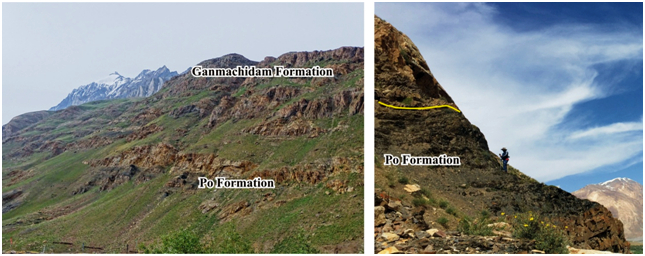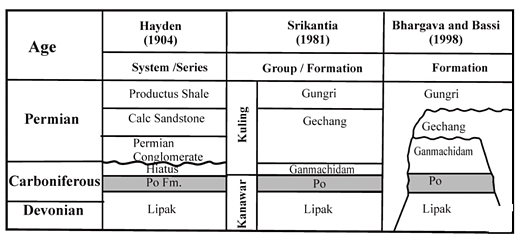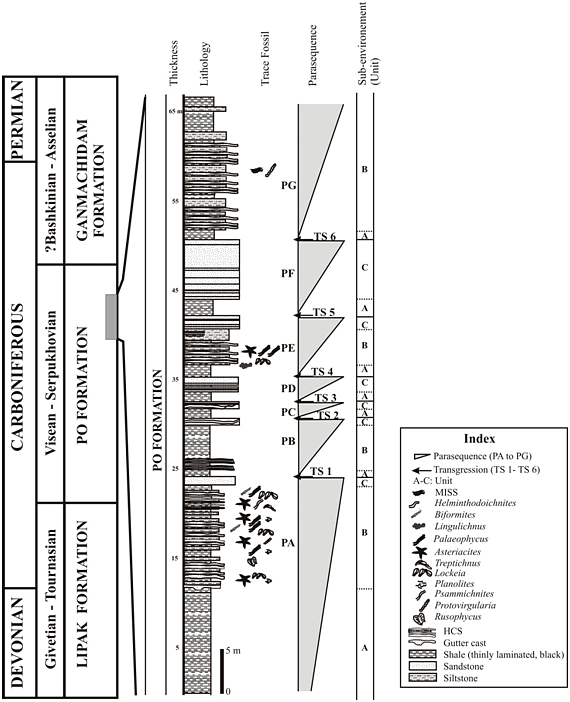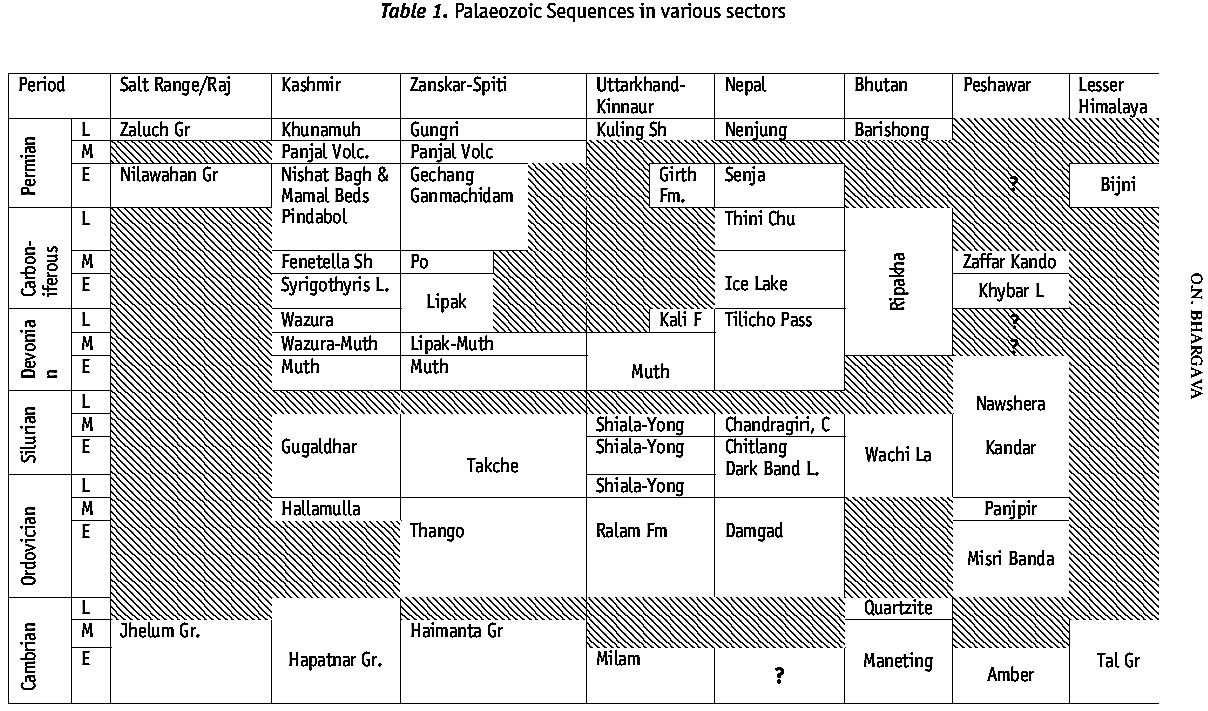Po Fm
Type Locality and Naming
Name derived from Po Village in Spiti. [Original Publication: Hayden, H.H. 1904 The geology of Spiti with parts of Bashahr. Memoirs of Geological Survey of India, 36(1): 121p;
Redefined by Srikantia, S.V., 1981. The lithostratigraphy, sedimentation and structure of Proterozoic–Phanerozoic formations of Spiti basin in the higher Himalaya of Himachal Pradesh, India. In: Sinha, A.K. (Ed.), Contemporary Geoscientific Researches in India (a commemorative volume in honor of S.P. Nautiyal). Bishen Singh Mahendra Pal Singh, Dehra Dun, pp. 31–48.]
Synonyms: Hayden 1904 “Po Series” Srikantia, 1981 “Po Formation”
[Figure: Zanskar-Spiti-Kumaun region location (provided by Om Bhargava)]
Lithology and Thickness
Clayey sandstone. Black carbonaceous shale, quartz sandstone, quartz wacke and gritstone. 700-1100 m
[Figure 1: Field photograph of the Po Formation at Ganmachidam Hill at Losar village in Spiti Valley (after Singh et al., 2017)]
[Figure 2: Stratigraphic relationship of the Po Formation with underlying and overlying formations in Spiti region of Himalaya (after Bhargava and Bassi, 1998; Singh et al., 2017)]
[Figure 3: Vertical section of the part of the Po Formation at Ganmachidam Hill, near Losar village, Spiti Valley]
Relationships and Distribution
Lower contact
Conformable with the underlying Lipak Fm.
Upper contact
Gradational with the overlying Ganmachidam Fm.
Regional extent
Zanskar-Spiti and Himachal Pradesh to Kumaun-Garhwal region of Northwest Tethyan Himalaya. The Po and the overlying Ganmachidam formations are intimately related and nowhere developed independently; they are either both present or both absent. The absence of the Po–Ganmachidam formations in most parts of the Himalaya is related to shallowing/regression of the sea initiated during the deposition of gypsum in the upper part of the underlying Lipak Formation (Bhargava & Bassi 1998).
[Figure: Paleozoic successions of Himalayas West-to-East (after Bhargava, 2008)]
GeoJSON
Fossils
The Po Formation in the vicinity of its type section at Poh village is 600 m thick and contains plant fossils, nautiloids, crinoids, bryozoans and other invertebrate fauna (Hayden, 1904; Ranga Rao et al. 1984; Bhargava & Bassi 1998). Rhacopteris ovata; Sphenopteridium furcilllatun; Rhacopteris inaequilatera; Sphenopteris sp.; Fenestella cf. plebeian; Protoretepora ampla; Productus scabriculus; P. linearus; Dielasms sp.; Spirigera sp. etc.
Trace fossils are Asteriacites stelliformis, A. quinquefolius, Biformites insolitus, Helminthoidichnites? isp., Lingulichnus isp., Lockeia siliquaria, Palaeophycus tubularis, Planolites isp., Protovirgularia isp. A, Protovirgularia isp. B, Protovirgularia isp. C, Psammichnites isp., Rusophycus isp., and Treptichnus isp (Bhargava & Bassi 1998; Singh et al., 2017).
Age
Depositional setting
A wide range of depositional settings have been suggested for the Po Formation, including shallow marine (Hayden 1904; Ranga Rao et al. 1984), shallow inner shelf to shoreface with high sediment input (Shanker et al. 1993), tide dominated coastal setting to middle shelf (Garzanti et al. 1996), and middle shelf to upper shoreface (Bhargava & Bassi, 1998) and upper shoreface to lower shoreface Cruziana ichnofacies of an open shelf (Singh et al., 2017).
Additional Information




